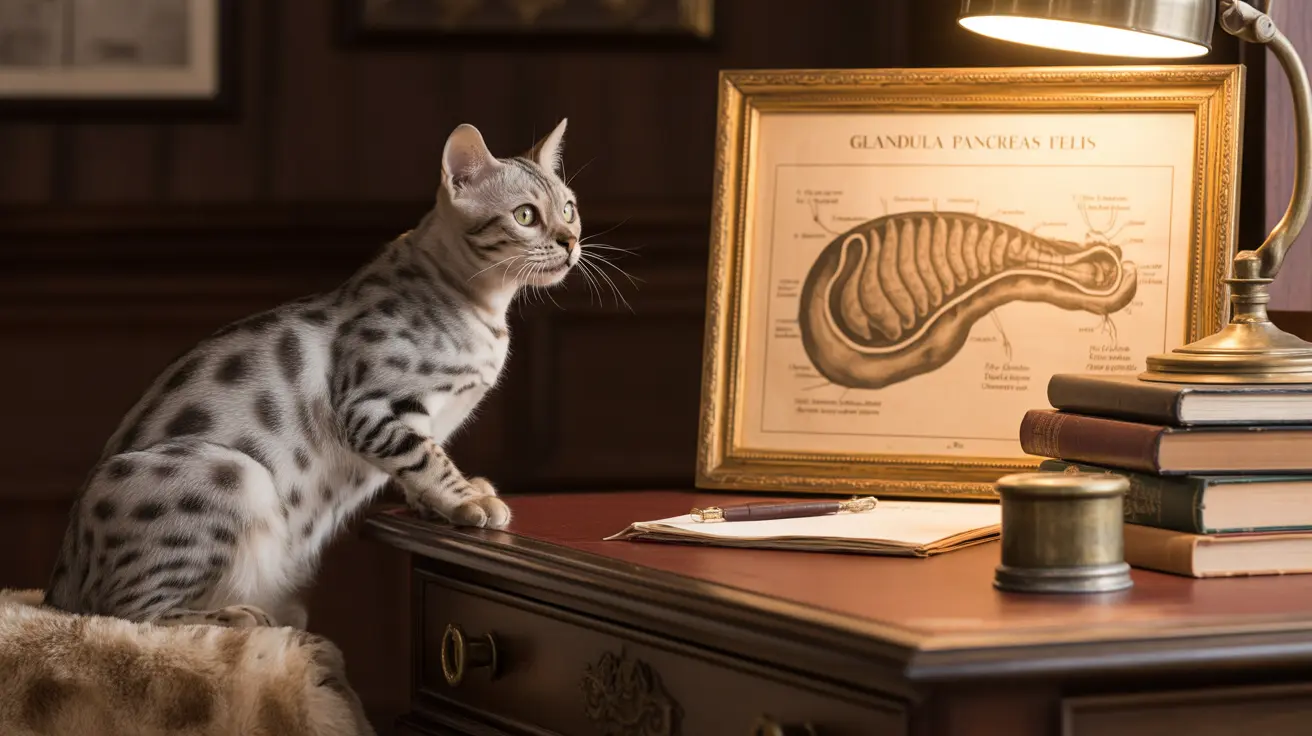The cat pancreas is a fascinating and vital organ that plays a crucial role in your feline friend's health. Located in the abdomen, this boomerang-shaped organ performs essential functions in both digestion and hormone regulation. Understanding its anatomy and function can help pet owners better recognize potential health issues and ensure proper care for their cats.
As a complex organ weighing between 6-8 ounces, the cat pancreas serves as both an endocrine and exocrine gland, meaning it secretes hormones directly into the bloodstream while also producing digestive enzymes. This dual functionality makes it indispensable for maintaining your cat's overall health and well-being.
Physical Structure and Location of the Cat Pancreas
The cat pancreas features a distinctive V-shaped structure composed of two main lobes - the right and left - connected by a central body. The right lobe extends along the duodenum, while the left lobe reaches toward the spleen. This unique arrangement allows the organ to efficiently perform its various functions while maintaining important connections with surrounding organs.
Unlike dogs, cats typically have a single pancreatic duct that joins with the bile duct before emptying into the small intestine. This anatomical feature is important for veterinarians to consider when diagnosing and treating pancreatic conditions.
Essential Functions of the Feline Pancreas
Digestive Role (Exocrine Function)
The pancreas produces vital digestive enzymes that break down proteins, fats, and carbohydrates in your cat's food. These enzymes include:
- Amylase for carbohydrate digestion
- Lipase for fat breakdown
- Proteases for protein processing
- Bicarbonate to neutralize stomach acid
Hormonal Role (Endocrine Function)
The pancreas contains specialized cells called islets of Langerhans that produce important hormones:
- Insulin for blood sugar regulation
- Glucagon to raise blood sugar levels
- Somatostatin to regulate other hormones
- Pancreatic polypeptide for digestive function
Common Pancreatic Health Issues in Cats
Several conditions can affect the feline pancreas, including:
Pancreatitis: This inflammatory condition can be acute or chronic, causing symptoms such as decreased appetite, lethargy, and abdominal pain. Early detection and proper treatment are crucial for managing this condition.
Diabetes Mellitus: When the pancreas doesn't produce enough insulin or the body becomes resistant to it, diabetes can develop. This condition requires careful monitoring and often daily insulin injections.
Maintaining Pancreatic Health
While not all pancreatic conditions are preventable, certain measures can help maintain pancreatic health:
- Maintaining a healthy weight
- Feeding a balanced, appropriate diet
- Regular veterinary check-ups
- Prompt attention to any digestive symptoms
Frequently Asked Questions
How is the pancreas of a cat structured and where is it located in the body?
The cat pancreas is a V-shaped organ located in the abdomen, consisting of two lobes (right and left) connected by a central body. It's positioned near the stomach and small intestine, with the right lobe extending along the duodenum and the left lobe reaching toward the spleen.
What are the main functions of the cat pancreas, and how does it contribute to feline digestion?
The cat pancreas has two main functions: producing digestive enzymes (exocrine function) and hormones like insulin and glucagon (endocrine function). It aids digestion by releasing enzymes that break down proteins, fats, and carbohydrates, while also regulating blood sugar levels through hormone production.
What are the common symptoms of pancreatitis in cats, and how is it typically diagnosed?
Common symptoms include lethargy, decreased appetite, vomiting, and abdominal pain. Diagnosis typically involves blood tests, including specific pancreatic enzyme tests, ultrasound imaging, and sometimes X-rays.
How should I care for a cat diagnosed with pancreatitis, including dietary changes and medication management?
Treatment typically includes supportive care, pain management, anti-nausea medications, and a specialized diet. Your veterinarian may recommend easily digestible foods and careful monitoring of food and water intake during recovery.
Can a cat's pancreas disorder, such as pancreatitis or diabetes, be prevented through diet or lifestyle adjustments?
While not all pancreatic disorders are preventable, maintaining a healthy weight, feeding an appropriate diet, and regular veterinary check-ups can help reduce the risk. Early detection and treatment of any underlying conditions are also crucial for prevention.






